Air is first inspired through this structure.
Nasal Cavity
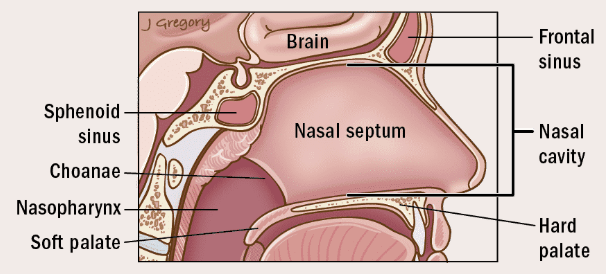
Found in the nasal cavity are structures or folds that are lined by a lot of blood vessels and mucous, when the air we breath hits these structures in our nasal cavity, the air spins and throws all the particulates in the air or pathogens into this mucous. These structures or folds are called
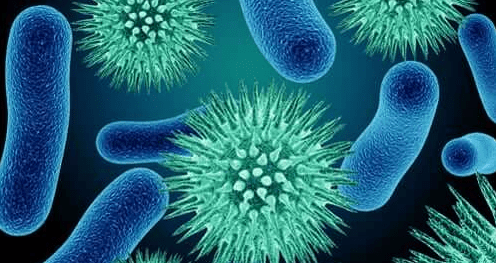
Turbinates
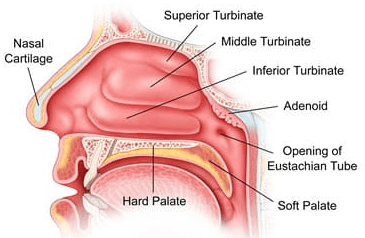
A Tracheostomy bypasses this part of our respiratory system
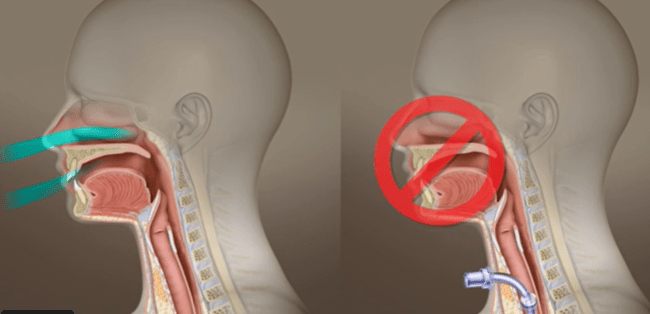
Upper Respiratory Tract
These two senses are impaired by a tracheostomy
Smell and Taste
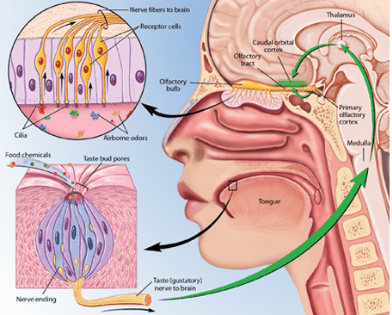
An HME and/or the F&P Airvo provide this vital normal part of the conducting pathway
Humidification
There are 3 parts to this structure within the Upper Respiratory Tract
Pharynx Nasopharynx, Oropharynx, Laryngopharynx
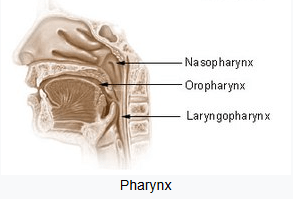
These structures or folds in the nasal cavity warm and humidify the air we breath, making gas exchange at the alveoli more beneficial
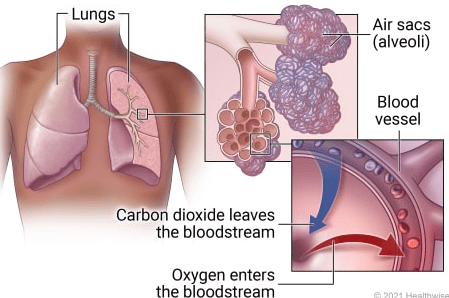
Turbinates
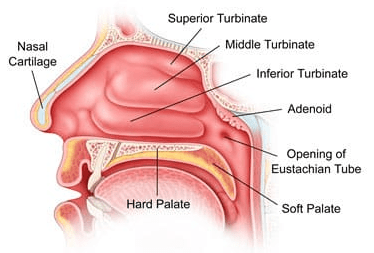
This part of our anatomy keeps our tracheal airways strong and open, like a straw to facilitate air movement for gas exchange
Cartilage
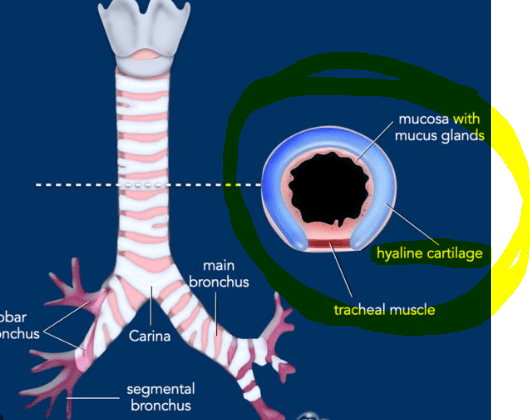
A Tracheostomy is typically placed approximately 2.5cm below this anatomical structure
Larynx
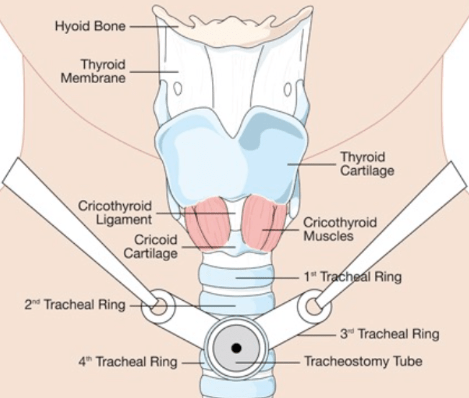
Used to check the cuff pressure on the Tracheostomy
Cuff Manometer
Ideal range is 20-30cmH20
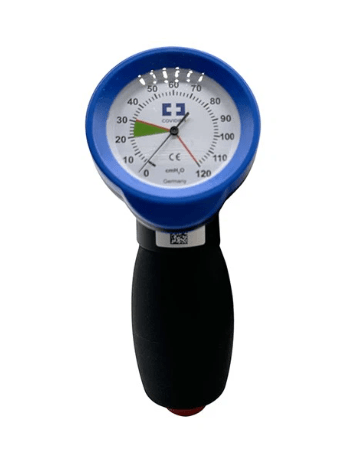
The Larynx is the last part of the conducting pathway within the upper respiratory tract, this structure comes next...
Trachea
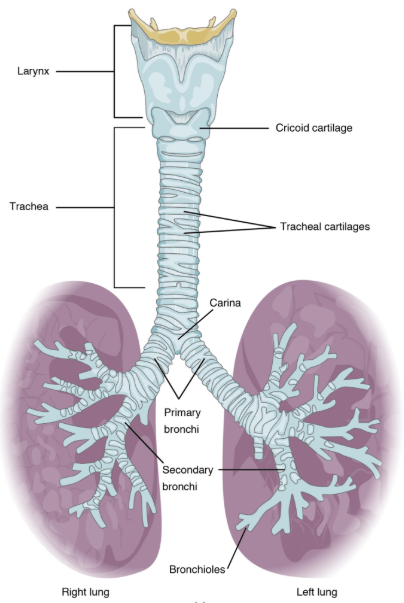
This structure is also known as our voice box
larynx
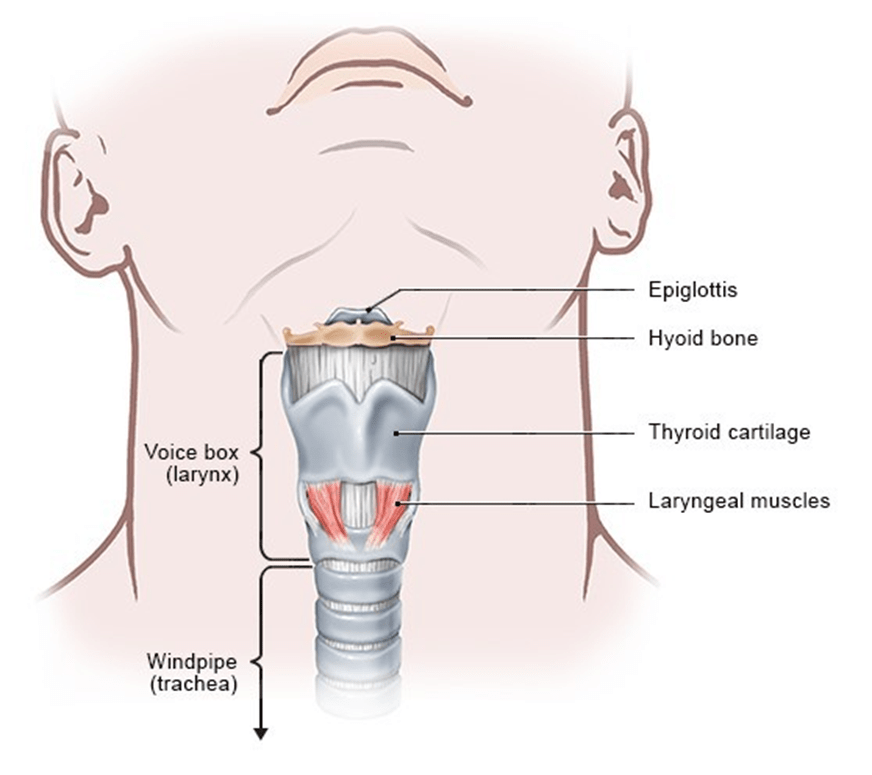
Carrys food and liquid from the mouth to the stomach via the pharynx (throat)
Esophagus
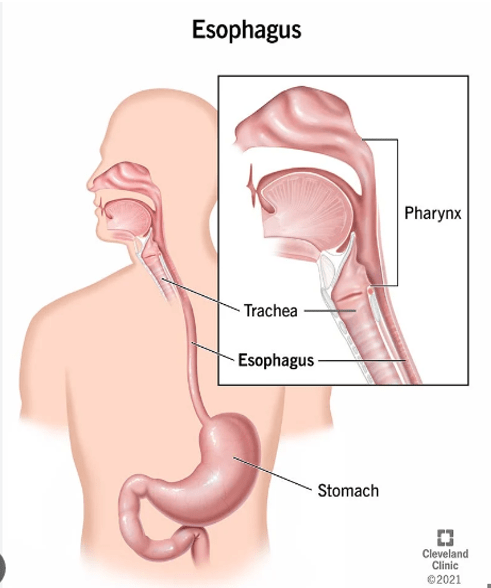
Must be checked and CHANGED at the start of each shift
Inner Cannula
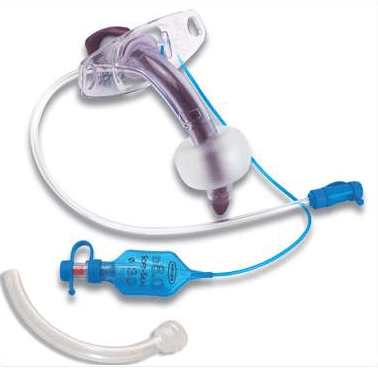
This is only performed when clinically indicated for a tracheostomy patient
Suctioning
In the lower respiratory tract the Trachea splits and bifurcates into the left and Right main
Bronchi
This structure is like a small moveable lid, it helps us to swallow, and prevents food and drink from entering the lungs
Epiglotis
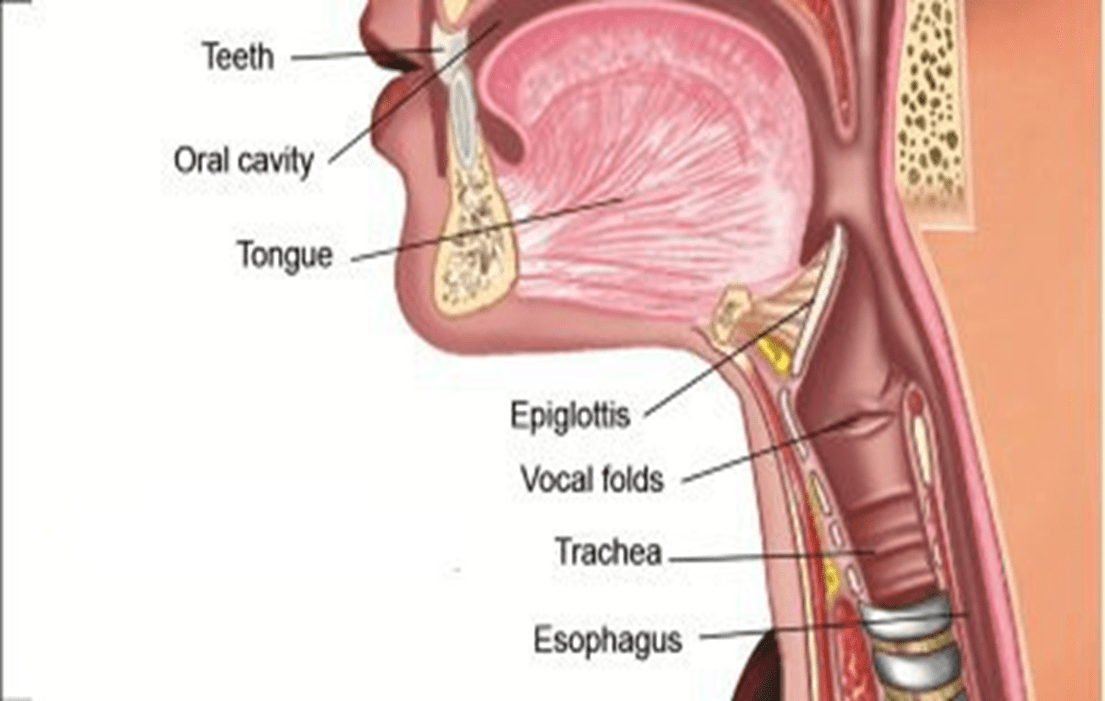
There is more of this in our lower airways, and it plays an important role, relaxing and constricting, helping the airways open and close for gas exchange
Muscle
Important to be adequate prior to suctioning
Oxygenation
Structural piece of the Tracheostomy that is checked at the start of the shift, decreasing the risk of aspiration of secretions
Cuff
Bronchi branch about 23 times to be the right upper middle and lower lobes on the left side we have 2 lobes, this makes way for our
Heart
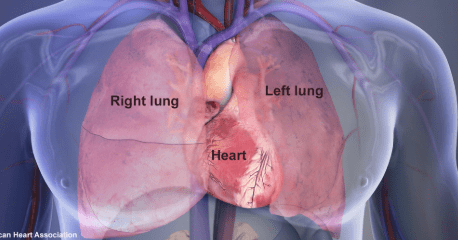
If the patient was to aspirate, the clinical structure most likely to facilitate this is the
The right main bronchi
Wider and more upright
The adams apple is present in both males and females, what we see externally is clinically referred to as
Laryngeal Prominence
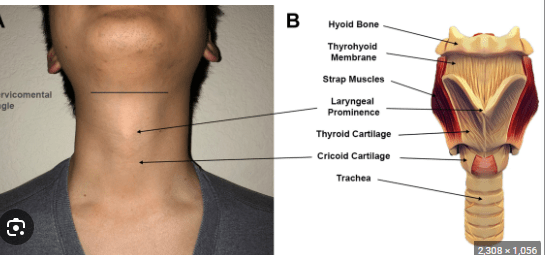
Inserting a suction catheter through a tracheostomy tube until resistance is met at this structure to remove secretions from the airway due to ineffective clearance
Carina
Maintaining the cuff pressure between 22-28mmHg is important to prevent these (name two)
- Reduced blood flow
- Tracheoesophageal fistula
- Tracheal Stenosis
- Tissue Damage/Necrosis
- Difficulty swallowing